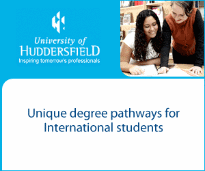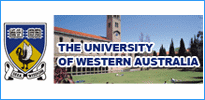East Timor: East Timor Education Profile 2012
2012/03/07
East Timor Education Profile 2012
About half the adult population are illiterate. Illiteracy is higher among women. Illiteracy was at 90% at the end of Portuguese rule. In 2006, 10–30% of primary-school age children did not attend school. The country has the National University of East Timor. Indonesian plays a considerable role within education[citation needed]. Since the departure of the Portuguese, schools have increased from 50 to more than 800. There are also 4 colleges.
Education in Timor-Leste
The UN-led transition government provided Timor-Leste the opportunity in planning and putting in place new systems. The National Development Plan (NDP) formulated through nationwide consultations in 2002 has a five-year timeframe for development planning, covering 1 July 2002 to 30 June 2007. The NDP made education a cornerstone of its strategy for alleviating poverty and nation-building.
The NDP vision 2020 provides that “the Timor-Leste people will be well educated, healthy, highly productive, self-reliant, and espousing the values of patriotism, non-discrimination, and equity within a global context.”
The NDP’s goals are: to improve the education status of the people; to contribute to the improvement of the economic, social, and cultural well-being of individuals, families, and communities in Timor-Leste; and to promote gender equity and empower women in Timor-Leste. The eight key programs in education aim to:
-
expand education access and improve internal efficiency of the school system
-
improve the quality of education
-
build management capacity and improve service delivery
-
promote non-formal education and adult literacy
-
promote Timor-Leste’s culture and arts
-
promote physical education and school sports
-
promote youth welfare; and
-
develop tertiary education
Literacy among those over 15 years old remains low at slightly less than 60 percent. Illiteracy prevails among nearly one-half of all adult females and about one-third of all adult males. Between 1976 and 1999, primary education grew, but junior secondary and senior secondary education expanded much slower rate. The younger generation has evidently attained higher levels of education than the older generation. As of 2001, 57 percent of the adult population had little or no schooling, 23 percent had only primary education, 18 percent had secondary education, and 1.4 percent had a higher education.
Education in Timor-Leste has evolved through three distinct periods: Portuguese colonial rule (1511-1975), Indonesian occupation (1975-September 1999) and the independent Democratic Republic of Timor-Leste, re-established after 3 years of United Nations Transitional Administration.
Mass education was not the policy of the colonial administration and when Portuguese rule ended, the illiteracy rate was about 90 percent. Indonesia vastly expanded public primary education. However, by 1999, Timor-Leste was not only behind the Indonesian enrollment average, but also was far from meeting its own national requirement of 9 years of compulsory basic education for children between the ages of 7 and 15.
The low educational attainment was in part due to the low level of public expenditure on education during the Indonesian administration. This resulted in poor quality and high repetition and low retention rates. Even though public primary education was free, households had to pay for books, school supplies, uniforms, transport and lunches and secondary schools charged annual and monthly fees.
Post-referendum destruction and following instability made reconstruction of the education system the primary issue over the short term, involving the rehabilitation of buildings and textbooks and the recruitment and reorganization of human resources (teachers and administrators).
Ten years after the re-establishment of independence, education outcomes continue to improve rapidly in Timor-Leste. Primary education enrolment has increased by 46% over the last 4 years. Gross intake and enrolment rates are well above 100%, indicating virtually universal access to first grade, with some older children, previously excluded from the system, going or returning to school. Primary Net Enrolment Rate was up to 83.2% in 2008/2009. Similarly, Lower Secondary education has seen a rapid increase in enrolment, by a third aver the last 3 years. Gross enrolment was up to 69% in 2008/09. Only Upper Secondary – with a GER of 38% – has not seen much increase. But increasing numbers of students progressing through lower levels of education will result in a sharp increase in lower secondary enrolment in a couple of years. However, Early Childhood Development programs access remains marginal – and systematic collection of data on this level will begin in 2010.
Literacy rates were calculated in 2007 at 85% and 58% respectively for ages 15-24 and 15+. However two main literacy programs, coordinated by the Ministry of Education, have a training capacity consistent with the national goal of eradicating illiteracy in the country by 2015.
Education quality, however, remains a challenge. A large share of teachers has had little or no training, and educational materials continue to be lacking in schools. These quality problems are reflected in results. An Early Grade Reading Assessment survey conducted in 2009 indicates that only 30% of students in grade 3 can read 60 words or more per minute. To address this issue, a teacher competency framework and a teacher career regime have been developed, and all teachers went in 2009 through an intensive 4 months training. A program aimed at distributing reading materials and providing specialized training for reading acquisition will also be implemented in 2010.
The share of the national budget that is allocated to education is still relatively low compared to international standards (13.6% of the recurrent budget in 2010). However, in nominal terms, the education budget has tripled over the last 5 years. Despite this sharp increase, the Ministry of Education is one of the best performers in the government in terms of budget execution.
To better tackle the challenges ahead and gather development partners behind its own efforts, the Ministry of Education has prepared a new National Education Strategic Plan 2010-2015. The plan benefited from a widely consultative process and has deep ownership at the highest level of the Ministry. It was presented to the education partners, who expressed their support. Finalization of the plan and specific request for support for its implementation will be done in the first half of 2010.
SEAMEO and Timor-Leste
The SEAMEO Secretariat formally introduced the Organization to the Minister of Education, Culture, Youth and Sports of Timor-Leste in 2002. In 2004, the Timor-Leste Ministry of Education and Culture formally expressed interest in regular membership in SEAMEO. The proposal was endorsed by the Philippines during the 40th SEAMEO Council Conference in Hanoi, Socialist Republic of Vietnam in March 2005. Upon recommendation of the Council, the 28th SEAMEO High Officials Meeting tabled for discussion the proposal of Timor-Leste’s membership.
The 28th SEAMEO HOM directed the Secretariat to initiate the process for Timor-Leste’s accession for formal approval during the 41st SEAMEO Council Conference and to ensure the Ministry’s willingness to participate in the SEAMEO activities. The Ministry of Education and Culture of Timor-Leste confirmed its Government’s approval of Timor-Leste’s participation in the Organization’s programmes and activities in March 2006.
SEAMEO, through its various units, participated in the rehabilitation efforts for Timor-Leste towards full independence in the wake of the global appeal launched by the United Nations in 1999.
The SEAMEO Regional Centre for Educational Innovation and Technology (SEAMEO INNOTECH) in the Philippines during its 43rd Governing Board Meeting sought approval for the Centre’s technical assistance projects to East Timor that were meant to build on the innovative learning systems developed by the SEAMEO Centre.
In July 2002, SEAMEO INNOTECH also participated in a Fact-Finding Mission fielded by the Philippine Government with support from the Japan International Cooperation Agency. The mission led to a technical assistance and training programme on institutional capacity building for the Continuing Education Centre of the Ministry of Education and Culture implemented by SEAMEO INNOTECH with funding from UNICEF. The mission also introduced SEAMEO to the officials of the Ministry of Education and Culture which later culminated in a study mission to the Philippines led by H E Minister Armindo Maia, Director General Domingos de Souza and other key officials of the Ministry and UNICEF Timor-Leste. The study mission was organised by SEAMEO INNOTECH.
Timor-Leste was also given Observer status in SEAMEO Meetings and Council Conferences since the 38th SEAMEO Council Conference held in Manila in March 2003. Timor-Leste has participated as Observer in the 39th and 40th SEAMEO Council Conferences.
The SEAMEO Regional Centre for Graduate Studies and Research in Agriculture (SEAMEO SEARCA), with the support of DAAD, also fielded a mission to Timor-Leste to select candidates for post-graduate programmes in Agriculture and related fields under the SEARCA DAAD scholarship programme that started in 2003.
- East Timor News
-
- AFGHANISTAN: UNWTO: International tourism – strongest half-year results since 2010
- EAST TIMOR: Timor-Leste’s worrying economic future
- AFGHANISTAN: Higher earning Why a university degree is worth more in some countries than others
- EAST TIMOR: East Timor’s Finance
- EAST TIMOR: Indonesia and Timor Leste agreed to boost ties, border talks
- AFGHANISTAN: Global growth will be disappointing in 2016: IMF's Lagarde
- Trending Articles
-
- SOUTH AFRICA: Nigeria and South Africa emerge from recession
- BAHRAIN: Bahrain issues new rules to encourage fintech growth
- NIGERIA: Nigeria has been one of the hardest-hit economies due to its over-dependence on oil
- ARUBA: Director of Tourism Turks and Caicos after Irma: Tourism, visitors, hotels current status
- ANGOLA: Angola: Elections / 2017 - Provisional Data Point Out Qualified Majority for MPLA
- WORLD: How fair is our food? Big companies take reins on sourcing schemes






.gif?1356023993)






